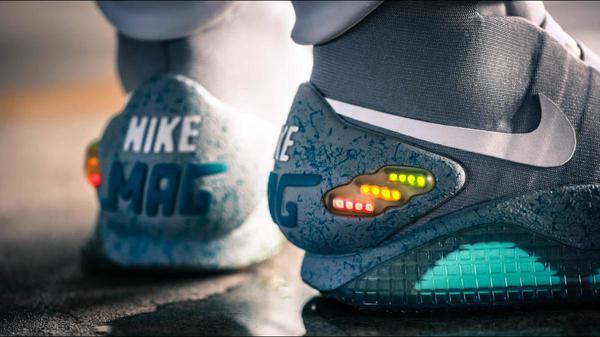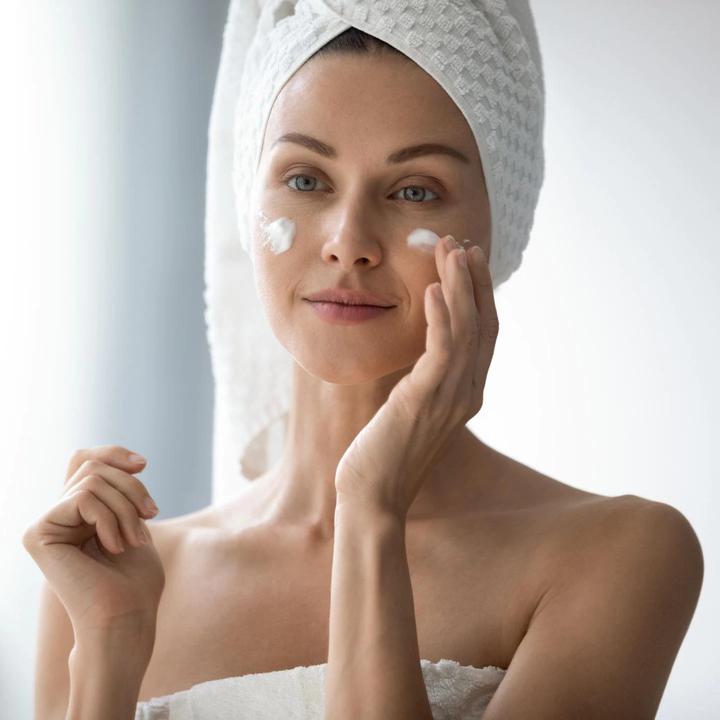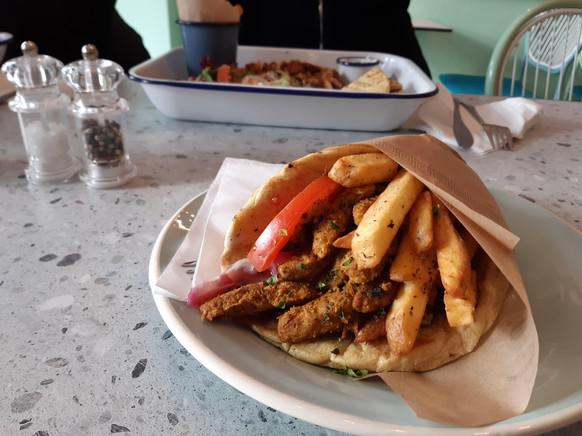
Balance board, wobble board, plank pad... There are many terms and descriptions for this type of fitness equipment. But what makes them different and which one is right for you? We've summarized everything you need to know about balance boards.
Explanation of terms: balance board, wobble board, plank pad – what is what?
With so many different names and versions, it is often difficult to draw precise distinctions. The manufacturers themselves often do not agree or assign their products to different terms. Nevertheless, we try to give you a small overview and orientation.
Balance board with roller
The term balance board is in a way the generic term for all boards with which you can train your balance. Nevertheless, many recreational athletes understand the term primarily to mean a board that is similar in shape to either a skateboard or a surfboard and comes with a wheel. Balance boards with wheels are probably the most challenging boards. After all, both components move here – board and pulley. Balancing and controlling both requires skill and – of course – balance. However, the fun factor is also the greatest and helps "board athletes" in particular not to lose their balance indoors.Affiliate LinkBoarderKING Berlin: Balance Board / All-Rounder-SetShop now139.99 €
A board without wheels, which is more like a U in shape and both ends of which point in the air, is often referred to as a balance board. This form is particularly suitable for children. They are available in natural wood or in bright colors made of plastic - just as you like
Wobble board
The term wobble board has also become firmly established. (Sometimes you will also find the term balance dome for this type of balance board.) This usually means boards that do not require a separate roller. Instead, they are equipped with a permanently integrated, semi-circular rubber ball. The majority of wobble boards are also round. The visual reference to skateboard or surfboards is omitted here. The level of difficulty is more in the middle range with a wobble board. In contrast to balance boards with rollers, only one component moves here - the ball, in contrast to the roller, remains firmly in place. "Finding" in a position is thus much easier; holding them is not to be underestimated and requires a lot of physical tension.Affiliate LinkDecathlon: wobble board / diameter 39.5 cmShop now€29.99€29.99
Plankpad or Balance Pad
In this case, the name already gives away a lot. This is a version in a handy, rectangular shape. There are also different variants in this area - be it with or without a hemisphere on the underside. If a balance pad has one of those hemispheres, the level of difficulty increases significantly compared to other balance pads. The functions are then similar to those of the wobble board.Affiliate LinkAmazon: Plankpad Pro incl. smartphone app with workoutsShop now99.00 €
However, other balance pads are "plain" and often made of a slightly firmer foam. Whether forearm support or one-legged standing - this training aid is primarily about simulating an uneven surface and balancing it out with body stability. Especially people who want to work on basic stability again after an injury are very well advised with such a balance pad.Affiliate LinkDecathlon: Balance Pad (Small)Shop now€14.99€14.99
Balance board - not to be confused with the vibration plate
In the classic sense, an electric variant in the form of the vibration plate also means a kind of balance board. Because you also train your sense of balance and your deep muscles with a vibration plate. However, this is where the similarities end. The degree of difficulty is lower with such devices. Challenges such as finding your balance and not falling are not given with this type of training. An effort and thus a training effect is here due to the permanent tension of the muscles.
Vibration plates are significantly more expensive than the previously mentioned balance boards due to the technology.
Which balance board is the best?
A balance board – with a wheel or without? Round, square, in the form of a mini surfboard? Made of natural materials or lightweight plastic? There are a lot more things to think about before buying a balance board than you might initially think.
The question that precedes all further considerations is: What exactly do you want to train with your balance board or what purpose should it serve? Are you an experienced surfer or skateboarder and want to train your balance to improve your surfing or skateboarding skills? Do you just want a "toy" that you can use to bridge the bad weather period until the next trip? Or is it much more about working on your stability after an injury to get your body back into "normal mode"?
Other questions that influence your choice of balance board: Advantages and disadvantages of each balance board
Once you know what you value in a balance board, you can compare this with the benefits that the respective variants offer you. Here is an overview of the advantages and disadvantages of the individual balance boards.
Balance Board with Wheel
Pro | Con |
best way to train your balance | rather for experienced athletes |
Highest fun factor - especially for skateboarders and surfers | highest potential for injury due to mobility of board and pulley |
versatile | Wooden boards and cork rolls are sometimes expensive |
numerous robust products made from natural materials (sustainability) | |
can be made yourself with just a few simple steps (and a little manual skill). |
If you like this variant the most, we recommend this balance board.
curved balance board (u-shaped)
Pro | Con |
good for children | usually without a non-slip coating |
beautiful models available in untreated wood | |
different price ranges - good selection | |
versatile exercises possible | |
medium difficulty | medium difficulty |
If you like this variant best, we recommend this U-shaped balance board.
wobble board
Pro | Con |
numerous uses | |
Can be used on both sides, depending on the board | |
all price ranges | |
many different models (wooden, plastic) | |
medium difficulty | medium difficulty |
If you like this variant the most, we recommend this wobble board.
Balance Pad
Pro | Con |
good for beginners / after injuries | Training effect for sporty people rather low |
available in different versions | |
Increasing the complexity of "normal" exercises possible (e.g. planks) | |
tends to be easy | tends to be easy |
If you like this variant the most, we recommend this balance pad.
Training with a balance board with roller Here's how it starts:
As is so often the case with the balance board, the motto is: safety first! Especially if you want to train with a board and a separate roller, you should make sure that the surface is non-slip so that you can optimally control your balance board. These tips might help you:
This is how it goes on:
Once you have internalized a secure footing and you feel comfortable, you can face new challenges over time. How about a deep squat, for example? Or do you even manage to stand on one leg on the balance board? Admittedly – the latter is already very advanced. Do you accept the challenge?
Great exercises for advanced users: Training with a balance board without a roller
With balance boards without a roller, you can do just as many different exercises and train different parts of the body. You can strengthen your abdominal and back muscles particularly effectively. For example, if you use that balance board for planks or push-ups. Due to the shaky ground, the body has to be tensed even more and the abdominal and back muscles have to work particularly hard.
Our favorite exercises with a balance board without a roller: You should pay attention to this when buying one
As already mentioned, there are many different types of balance boards on the market. Of course, it is up to you how much money you want to spend on such sports equipment, how much value you place on sustainability or which body parts you want to train with your balance board. Apart from these individual criteria, we still have a few helpful tips on what to look out for when making a purchase.Affiliate LinkAmazon: Balance Board by BoarderKINGShop now119.99 €
Build your own balance board
Are you thinking of building your own balance board? Then we would like to encourage you in this project. Not only do you have maximum design freedom, you can also choose your own materials. You only need a few items for this:
Balance board exercises briefly explained
*V-sit: In this exercise, you sit on your buttocks and straighten both your arms and legs. The further you open the V, the more intense the exercise becomes. It is important that your back remains straight and that your arms are not too far in front of your head, but rather at your side. If the abdominal or back muscles are not yet sufficient, you can either put your legs up and only lean your upper body and arms backwards or, conversely, support your arms and keep your legs stretched in the air.
*Russian Twist: For this exercise, the starting position is the V-sit (in your variation, depending on your fitness level, with or without raised legs). Now, while keeping your lower body still, twist your upper body left and right as far as you can – twisting to your sides. Make sure you're facing the appropriate direction at each step, and don't just let your arms wander to the sides.
*Dips: Your triceps will appreciate any form of dip. With a balance board, you can add additional challenges in two ways. The basic exercise Dips: In an inverted position on all fours, bend and straighten your arms. The fingers point to the bottom. Make sure your elbows point backwards. The movement may be minimal, but you will certainly feel the effect very quickly. The further you stretch your legs, the harder it gets. With a balance board you can now either place your hands on the board or your feet. Both variants will ensure that your entire body - but especially your core - has to work even harder to stay stable.







